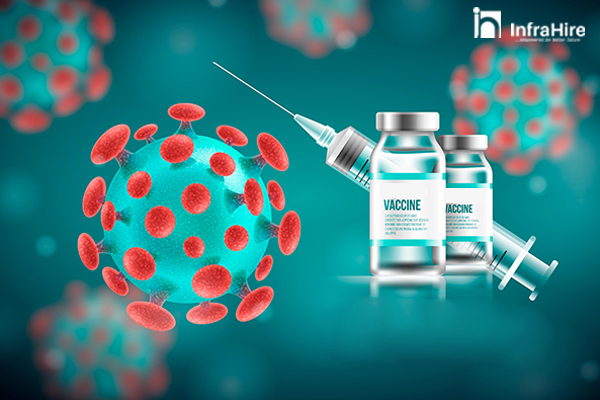One of the most important inventions of medicine and life science, the vaccine, has come an extended way in preventing deadly infectious diseases in humans. There has also been evolution in terms of the process with which the vaccines are made. From the Chinese employed smallpox inoculation as early as 1000 CE to the primary medically recognized vaccine invented by Edward Jenner, to the foremost recent Covid Vaccines, the progress made has been a result of strong human will to raise themselves within the race against the ever-growing diseases posing a threat to our race.
As we look back at the evolution of vaccines, it's important to start out with the science that goes into it. Vaccination, as we all know, is used or done to allow people achieve immunity against viruses. Immunization is done by inducing or administrating antibodies and other natural defense mechanisms to guard against specific pathogens. There are two sorts of immunization, active and passive. Active immunization involves the administration of a modified pathogenic agent, or a component of a pathogen, to stimulate the recipient's immune mechanisms to give long-lasting protection without causing the clinical manifestations or other consequences of disease.
Passive immunization is accomplished by transferring antibodies against a given disease from an immune person or animal to a nonimmune individual, usually by injection of serum (antisera) or some partially purified serum extract. Examples are diphtheria and tetanus antitoxins, and immune globulin for the prevention of hepatitis.
History of Immunization
Active immunization began with smallpox and was supported the observation that immunity might be conferred by rubbing smallpox scabs against the skin, which usually resulted during a mild case of the disease. it had been introduced in Britain and therefore the American colonies early within the eighteenth century. Although, the tactic was efficient, there have been occasional deaths, that led to controversy about the advantages and risks of the procedure, and thus continued the look for a far better vaccine.
By the center of the eighteenth century, physicians recognized that persons infected with cowpox seemed to be shielded from later exposure to smallpox, leading to Edward Jenner's classic experiment in 1796.
Serum therapy, later called antitoxin therapy, began within the first 1890s with the invention that animals inoculated with heat-killed broth cultures of diphtheria or tetanus bacilli were able to survive subsequent (otherwise fatal) inoculations with those organisms.
Post war II, remarkable advances were made within the development of vaccines for other diseases. In rapid succession, viral vaccines were developed for the control of poliomyelitis, measles, rubella, and mumps.
The Present
In contrast to the tactic during which the earliest vaccines, like those for smallpox and diphtheria, were developed, modern-day vaccine innovation is predicated on increasing knowledge of microbiology, mechanisms of infection and immunity, and therefore the cellular biology of the infecting organisms, including basic biochemical structures and genetics . These developments have proven beneficial in immunologic prevention of the many widespread infectious diseases, and can help meet new needs for vaccines within the days to return .
The development of a replacement vaccine may be a complex and expensive process. It starts with assessments of the impact of the communicable disease (measured by rates of mortality, acute morbidity, and permanent sequelae within the population); of the estimated cost of the disease and therefore the projected costs of development, production, and administration of the vaccine; and of the vaccine's ranking among other health care priorities.
These steps to understanding an communicable disease and developing preventive measures like vaccines are conducted with continuing formal and informal consultations among agencies of the govt , concerned scientists, and makers . Multiple phases of evaluation are conducted before the ultimate plow ahead . Phase 1 constitutes initial testing of the vaccine during a small number of persons to work out first its safety then its immunogenicity at various dose levels and for various routes of administration. Phase 2 studies include administration of the vaccine to a bigger number of persons to get further data on adverse effects and therefore the immune reaction , and, perhaps, limited evidence of disease prevention. during a nutshell, all the science that goes into the developing vaccines ensures to the extent possible that vaccines are acceptably safe and effective.
